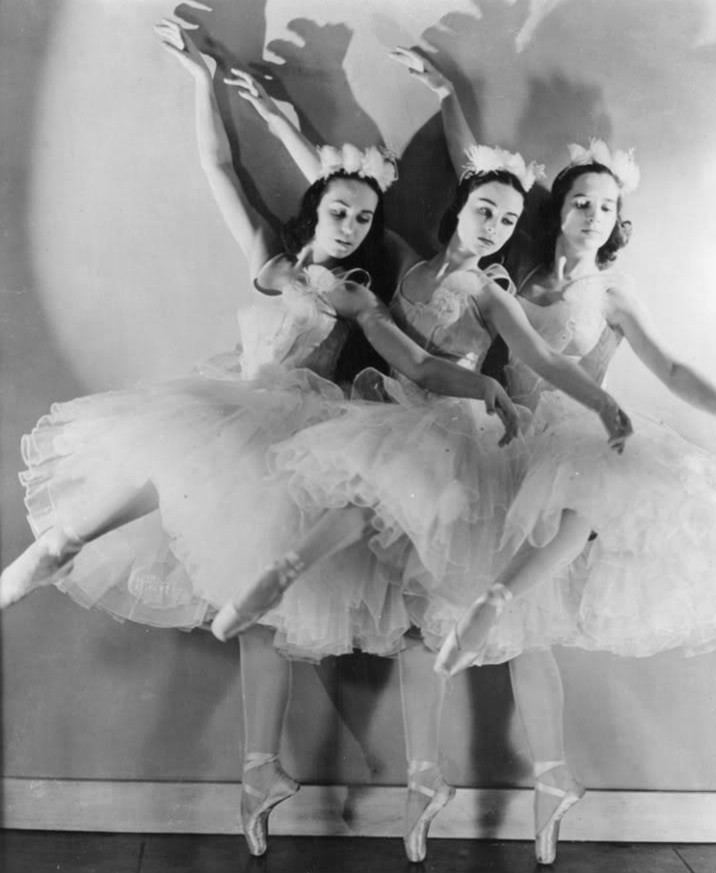Year founded 1937 Principal venue various | Closed 1968 Company Manager Sol Hurok | |
 | ||
Name Ballet Russe de Monte Carlo Founders Léonide Massine and René Blum | ||
Ballet Russe de Monte Carlo was a ballet company created by members of the Ballets Russes in 1937 after Léonide Massine and René Blum had a falling-out with the co-founder Wassily de Basil (usually referred to as Colonel W. de Basil). De Basil then renamed his rival company The Original Ballet Russe.
Contents
The Ballet Russe de Monte Carlo featured such dancers as Frederic Franklin, Alexandra Danilova, Maria Tallchief, Tamara Toumanova, George Zoritch, Yvonne Joyce Craig, Nina Novak, Raven Wilkinson, Cyd Charisse, Marc Platt, Irina Baronova, and Leon Danielian. The company's resident choreographer was Massine; it also featured the choreography of Michel Fokine, Bronislava Nijinska, Frederick Ashton, George Balanchine, Agnes de Mille, Ruth Page and Valerie Bettis.
The Ballet Russe de Monte Carlo toured chiefly in the United States after World War II began. The company introduced audiences to ballet in cities and towns across the country, in many places where people had never seen classical dance. The company's principal dancers performed with other companies, and founded dance schools and companies of their own across the United States and Europe. They taught the Russian ballet traditions to generations of Americans and Europeans.
History
Blum and de Basil fell out in 1934, and their Ballet Russes partnership dissolved. After working desperately to keep ballet alive in Monte Carlo, in 1937 Blum and former Ballet Russes choreographer Léonide Massine acquired financing from Julius Fleischmann, Jr.'s World Art, Inc. to create a new ballet company.
At the start of Blum and Massine's company, Massine ran into trouble with Col. de Basil: the ballets which Massine choreographed while under contract with Col. de Basil were owned by his company. Massine sued Col. de Basil in London to regain the intellectual property rights to his own works. He also sued to claim the Ballet Russe de Monte Carlo name. The jury decided that Col. de Basil owned Massine's ballets created between 1932 and 1937, but not those created before 1932. It also ruled that both successor companies could use the name Ballet Russe — but only Massine & Blum's company could be called Ballet Russe de Monte Carlo. Col. de Basil finally settled on the Original Ballet Russe.
The new Ballet Russe de Monte Carlo gave its first performance in 1938. British dancers Frederic Franklin and Jo Savino were also among those who joined the new company. Franklin danced with the company from 1938–1952, assuming the role of ballet master in 1944. With the company, Franklin and Alexandra Danilova created one of the legendary ballet partnerships of the twentieth century.
Sol Hurok, manager of de Basil's company since 1934, ended up managing Blum's company as well. He hoped to reunite the two ballet companies, but he was unsuccessful.
The Ballet Russe de Monte Carlo and the Original Ballet Russe often performed near each other. In 1938, both the Ballet Russe de Monte Carlo and the Original Ballet Russe performed in London within blocks of each other. Hurok continued to have the companies perform near each other. After London, Hurok booked both of the companies to perform seasons in New York, for a total of fifteen weeks, making it the longest ballet season of New York. Along with management, the two companies also shared dancers.
Co-founder René Blum was arrested on December 12, 1941, in his Parisian home, among the first Jews to be arrested in Paris by the French police after France was defeated and occupied by the German Nazis during World War II. He was held in the Beaune-la-Rolande camp, then in the Drancy deportation camp. On September 23, 1942, he was shipped to the Auschwitz concentration camp, where he was later killed by the Nazis.
With Blum gone, Serge Denham, one of the co-founders of World Art, took over as company director.
Massine left the company in 1943.
Based in New York from 1944–1948, the company's regular home was New York City Center.
In 1968, the company went bankrupt. Before then, many of its dancers had moved on to other careers; a number started their own studios and many taught ballet in larger studios, especially in New York and other major cities.
Works
Legacy
Many of the company's principal dancers and corps de ballet founded dance schools and companies of their own across the United States and Europe, teaching the Russian ballet traditions to generations of Americans and Europeans.
Choreographers and principal dancers
Corps de ballet
In popular culture
A feature documentary about the company, featuring interviews with many of the dancers, was released in 2005, with the title Ballets Russes.
